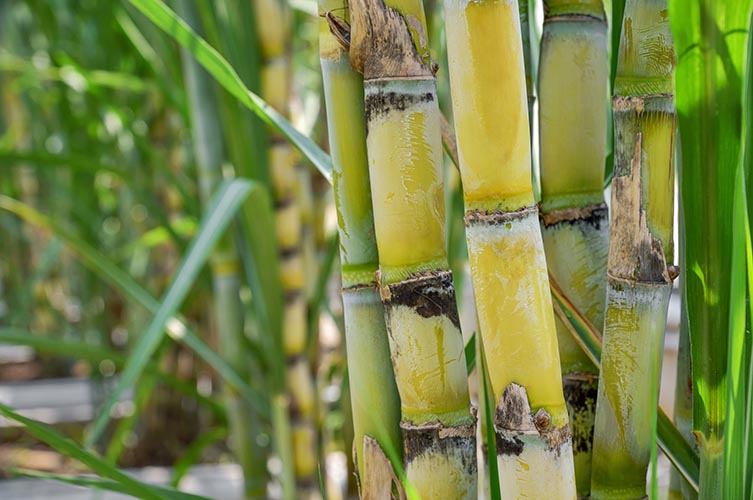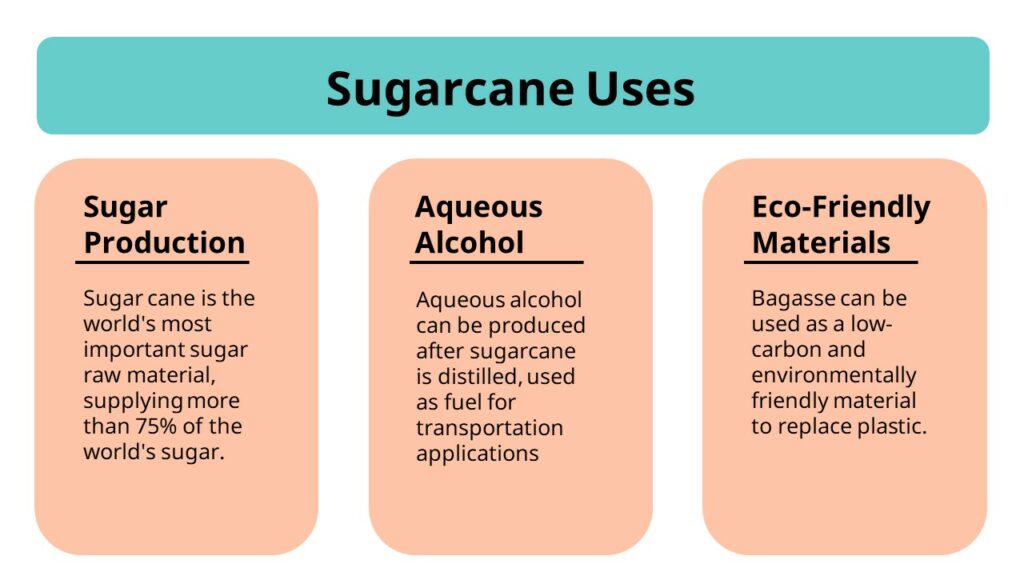Everything About Sugar Canes: What Are Sugar Canes Used For and Their Function in Global Farming?
Sugar walking sticks serve as a foundation of international farming, primarily acknowledged for their function in sugar manufacturing. They also add to the development of by-products like molasses and ethanol. These aspects not just support different industries but additionally influence financial stability in rural areas. However, the cultivation of sugar walking canes deals with significant environmental difficulties. Recognizing their multifaceted duty motivates more expedition right into their agricultural techniques and sustainability efforts.
The Agricultural Process of Sugar Walking Cane Farming
Sugar cane growing may differ by region, the basic agricultural process stays consistent. The primary step includes selecting high-yielding selections appropriate for neighborhood climates. Preparation of the soil is essential, usually requiring tillage and the addition of fertilizers to improve fertility. Growing usually happens throughout the rainy period, with farmers making use of either whole stalks or cuttings to develop new crops.As the plants expand, they need persistent care, consisting of weed control, parasite management, and watering, relying on the environmental problems. Farmers check the sugar walking cane's growth cycle, which generally extends 10 to 24 months, prior to gathering. Gathering is labor-intensive, commonly conducted manually or with specialized machinery, making sure marginal damage to the stalks. Complying with harvest, the walking cane is delivered to refining centers. This thorough farming procedure not just sustains regional economies but additionally plays a substantial role in worldwide agricultural techniques, adding to food and energy materials.
Sugar Production: From Cane to Crystal
The trip of sugar production starts the minute freshly harvested sugar cane comes to refining centers. The initial step includes chopping the walking cane and washing to prepare it for extraction. Making use of high-pressure rollers, the juice is removed from the smashed cane, leading to a pleasant liquid recognized as sugarcane juice. This juice goes through clarification, where pollutants are removed with the addition of lime and heat.Next, the clarified juice is focused by boiling it to produce a thick syrup. This syrup is after that crystallized by cooling down, enabling sugar crystals to form. The taken shape sugar is separated from the remaining syrup, referred to as molasses, through centrifugation.Finally, the sugar crystals are washed and dried out, leading to the acquainted granulated sugar (What Are Sugar Canes Used For). This process transforms raw sugar walking cane into a product that is important to numerous culinary and industrial applications, highlighting the importance of sugar in worldwide farming
Biofuels and Sugar Canes: A Sustainable Future
As the world significantly seeks sustainable power services, sugar walking canes have become an encouraging resource for biofuels. The biomass derived from sugar walking sticks can be exchanged ethanol, a renewable gas option that noticeably lowers greenhouse gas emissions compared to nonrenewable fuel sources. This procedure not just offers a cleaner power resource yet also promotes power independence for many countries.In addition, sugar walking cane cultivation supports rural economic climates by developing jobs in both farming and biofuel production industries. The usage of sugar walking sticks for biofuel manufacturing additionally urges farming diversity, which can boost soil wellness and decrease reliance on solitary crops. The spin-offs of sugar walking stick processing can be used for electricity generation, in addition adding to a lasting energy cycle. As nations endeavor to satisfy renewable energy targets, sugar walking sticks are positioned to play an important role in shaping an extra sustainable future in the biofuel landscape.

The Role of Sugar Canes in Drink Production
Sugar canes play a significant duty in drink production, functioning as a main component in rum and contributing to the sweetness of numerous sodas. In addition, their all-natural juices are used in various drinks, improving flavor and allure. This convenience highlights the significance of sugar canes in the international beverage market.
Sugar Walking Stick in Rum
Rum production is intricately connected to the growing of sugar walking stick, an important plant that offers the required fermentable sugars required for fermentation. This process starts with the extraction of juice from collected sugar canes, which is after that either fermented directly or refined right into molasses. Yeast is included in transform the sugars into alcohol, causing a diverse variety of rum styles, from light to dark selections. The geographical area where the sugar walking stick is grown substantially influences the taste profile of the rum, with aspects such as dirt type and environment playing critical functions. Nations like Barbados, Jamaica, and Cuba are renowned for their rum production, mirroring the historic and social value of sugar cane within the worldwide drink sector.
Soft Drinks Sweetener Source

All-natural Juice Manufacturing Utilizes
In enhancement to its considerable duty in soda manufacturing, sugar walking stick is also pivotal in the all-natural juice sector. The juice extracted from sugar walking stick, referred to as walking stick juice, is commemorated for its natural sweet taste and special flavor profile. This juice is typically taken in fresh in various regions, particularly in exotic nations, where it is appreciated as a renewing drink. In addition, walking stick juice offers as a base active ingredient in a series of natural fruit juices and smoothies, enhancing both preference and nutritional value. Its all-natural properties make it an eye-catching option to synthetic sugar, attracting health-conscious consumers. On the whole, sugar walking stick's adaptability in juice production emphasizes its significance in modern drink offerings worldwide.
Technologies in Sugar Cane Byproducts
Innovations in sugar cane results are leading the way for sustainable options in various industries. Biofuels stemmed from sugar walking stick use a different power source, while developments in lasting product packaging are lowering dependence on typical materials. These advancements highlight the convenience and potential of sugar walking stick past its primary usage in drink production.
Biofuels From Sugar Walking Stick
Just how can the byproducts of sugar cane add to lasting power services? The conversion of sugar walking stick right into biofuels offers a promising opportunity for sustainable power. By making use of the coarse residue, recognized as bagasse, manufacturers can produce bioethanol with fermentation procedures. This bioethanol can offer as a lasting choice to nonrenewable fuel sources, minimizing greenhouse gas exhausts and dependence on non-renewable sources. In addition, molasses, another byproduct, can be fermented to produce biofuels, maximizing resource efficiency. The energy generated from sugar cane not only provides a cleaner fuel resource yet likewise boosts the overall financial practicality of sugar production. By integrating biofuel manufacturing right into their procedures, sugar walking stick markets can play a crucial duty beforehand lasting energy services worldwide.
Sustainable Packaging Solutions
Sustainable product packaging services are progressively being developed from sugar cane results, showcasing the convenience of this farming staple. Developments such as biodegradable plastics originated from bagasse, the coarse residue left after juice extraction, are obtaining grip. These materials supply a green option to conventional plastics, reducing reliance on fossil gas and decreasing carbon footprints. In addition, sugar cane-based packaging is compostable, breaking down normally without harming the setting. Business are currently checking out these choices to align with customer demand for sustainability. As awareness of plastic contamination grows, the adoption of sugar cane-derived packaging is anticipated to rise, my latest blog post positioning sugar canes as a principal in the shift to greener packaging services in numerous markets.
Economic Impact of Sugar Walking Stick Farming

Although sugar cane farming has deep roots in lots of economies, its financial influence expands far past farming manufacturing. This crop serves as a substantial income for numerous farmers worldwide, specifically in developing nations where agriculture is a main resources. Sugar cane contributes to regional economic situations through job development in processing, cultivation, and harvesting. The market likewise promotes growth in relevant industries such as transport, devices production, and food processing.Furthermore, sugar walking stick is a vital gamer in global profession, influencing global markets and prices. Countries that produce sugar cane commonly rely upon exports to improve their economic stability. The by-products of sugar cane, such as ethanol and molasses, branch out income streams for farmers and add value to the farming market. Generally, the economic ramifications of sugar cane farming are extensive, influencing not just farmers however also entire areas and national economic climates.
Environmental Factors To Consider in Sugar Cane Farming
While sugar walking stick farming plays an essential duty in lots of economic climates, it also raises considerable ecological issues that can not be forgotten. The comprehensive use fertilizers and chemicals in sugar walking cane growing typically results in dirt degradation and water contamination. Drainage from these chemicals can contaminate close-by water bodies, harming marine communities. Additionally, the monoculture practices widespread in sugar walking cane farming lower biodiversity, making environments extra vulnerable to insects and diseases.Deforestation is one find out here now more essential issue, as land is typically gotten rid of to make way for sugar ranches, resulting in habitat loss for wild animals and raised carbon emissions. Furthermore, the high water usage needed for sugar cane watering can stress local water resources, particularly in dry areas. As worldwide demand for sugar remains to increase, resolving these ecological obstacles comes to be crucial to assure lasting methods in sugar walking stick growing.
Regularly Asked Questions
What Are the Nutritional Advantages of Sugar Walking Stick?
The dietary benefits of sugar walking cane primarily include its high carbohydrate material, supplying energy. Additionally, it contains vitamins, minerals, and antioxidants that might sustain general health, though moderation is crucial as a result of its sugar web content.
Exactly How Does Sugar Walking Stick Affect Local Ecosystems?
Sugar walking cane farming can substantially impact neighborhood ecosystems by changing land use, affecting biodiversity, and calling for considerable water resources. Furthermore, it may lead to dirt deterioration and pesticide drainage, interrupting surrounding habitats and wild animals populaces.
What Is the History of Sugar Walking Cane Growing?
:max_bytes(150000):strip_icc()/SugarCanesSaccharumofficinarumNancyAyumi-26c9c80ee473464bbe322c83ecd9bfc1.jpg)
Exist Alternatives to Sugar Cane for Sugar Manufacturing?
Alternatives to sugar walking stick for sugar manufacturing consist of sugar beets, corn, and numerous exotic plants like sorghum and agave (What Are Sugar Canes Used For). These crops supply diverse resources of sweetness, each with unique cultivation needs and environmental influences
How Do Climate Patterns Influence Sugar Walking Stick Returns?
Weather patterns considerably influence sugar walking cane yields with temperature level changes, rainfall quantities, and seasonal cycles. Drought or extreme rains can impede development, while suitable conditions improve photosynthesis, ultimately influencing the quantity and top quality of the harvest. The trip of sugar production begins the moment newly harvested sugar walking stick gets here at refining facilities. The taken shape sugar is separated from the continuing to be syrup, understood as molasses, through centrifugation.Finally, the sugar crystals are washed and dried out, resulting in the acquainted granulated sugar. Rum production is delicately linked to the growing of sugar cane, a vital plant that provides the required fermentable sugars needed for fermentation. Furthermore, the monoculture techniques widespread in sugar walking cane farming reduce biodiversity, making environments extra prone to insects and diseases.Deforestation is one more important issue, as land is often removed to make means for sugar vineyards, leading to habitat loss for wildlife and increased carbon emissions. Alternatives to sugar cane for sugar production include sugar beetroots, corn, and numerous exotic plants like sorghum click this link and agave.